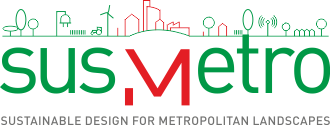At SUSMETRO, we go beyond a purely science-driven approach to impact assessment and scenario development. Our focus is on actively engaging decision-makers and stakeholders in a collaborative ‘fact-finding exercise.’ This process, framed as a Knowledge Brokerage activity, helps develop and explore various food-chain scenarios tailored to specific regions.
To facilitate this, we leverage cutting-edge tools like the MapTable and GIS technology. These technologies enable the visualization of the spatial implications of food-chain innovations and their social, economic, and environmental impacts.
The MapTable is a digital design tool specifically crafted for spatial planning. It plays a central role in collaborative, participatory processes, bringing stakeholders together to discuss and co-create new spatial designs (see Figure below). Its primary purpose is to provide insights into spatial relationships within a specific area, efficiently harnessing the collective knowledge of participants.
By combining the MapTable with an extensive spatial database and integrated process models, we deliver a streamlined, efficient, and effective design process that saves time while achieving meaningful results.

MapTable for education: students learn about food systems and agricultural land use (FoodSHIFT Pathways project, 2023)

